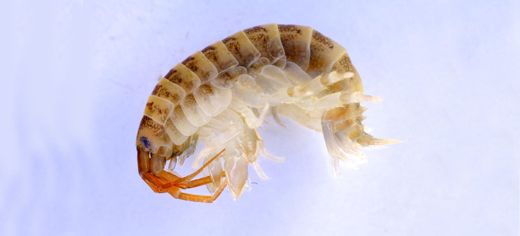
Foreign species that are devastating water ecosystems could be "hitchhiking" around Britain on canoeists' and anglers' kit, according to a new study.
Invaders like the killer shrimp, zebra mussel and American signal crayfish have already caused extensive environmental damage and millions of pounds of economic costs.
The new research, led by the University of Leeds and the Centre for Environment Fisheries and Aquaculture Science (Cefas), found that the cleaning habits of anglers and canoeists could be a key part of the problem.
The study, based on a survey of more than 1,500 water sports enthusiasts across the UK, found that 64% of anglers and 79% of canoeists used their equipment in more than one waterway in a fortnight.
A significant proportion of those people (12% of anglers and 50% of canoeists) said they did not clean or dry their kit before moving to the new waters.
Dr Alison Dunn, Reader in Evolutionary Ecology in the University of Leeds’ Faculty of Biological Sciences, who led the Leeds group, said: “This is really alarming because some of the most dangerous invasive species can easily survive in damp equipment.
“The killer shrimp, for instance can live in a fold of a wetsuit or an angling net for about 15 days. Once it gets into the new water system, it is voracious. It will take bites out of things and leave them uneaten, killing when it doesn’t need to eat. The native shrimp is replaced, food stocks vital to other species are depleted and the ecosystems can be devastated.”
In 2011, the Government, in partnership with a large number of environmental NGOs, launched a “Check, Clean, Dry” campaign to try to address the issue by encouraging water users to clean their gear before moving to new sites. While there has been significant support for the campaign, the study shows that there is still some way to go to further reduce the risk.
It also shows a risk of direct importation of new species from abroad. Eight percent of anglers and 28 per cent of canoeists reported using their equipment overseas without cleaning or drying it on their return.
Co-author Dr Paul Stebbing of Cefas said: “The killer shrimp is not the only invader capable of ’hitchhiking’ into new ecosystems on water sports equipment. The signal crayfish, which has been laying waste to native white-clawed crayfish populations, persists between three and seven days. Some invasive viruses and diseases can survive well over a month.”
The lead researcher on the study, Lucy Anderson of the University of Leeds’ Faculty of Biological Sciences, said: “There are 4 million anglers and more than 400,000 boat owners in the UK and the frequency with which people are using their equipment at different sites suggests that they may be an important pathway for invasive species. Once invasive species establish in rivers and lakes, they’re almost impossible to eradicate, so preventing their introduction and further spread in the first place is the best way that we have of controlling them.”
The “Check, Clean, Dry” campaign asks water sports participants to:
- Check all gear and clothing for live organisms, particularly in areas that are hard to inspect.
- Clean and wash all clothing, footwear and equipment properly.
- Dry all equipment thoroughly as many species can live for many days in moist conditions.
Dr Niall Moore, head of the Non-native Species Secretariat for Great Britain (NNSS), the official body responsible for fighting invasive species, said: "Invasive species can affect fish and other wildlife, restrict navigation, clog up propellers and be costly to manage. This research highlights the fact that water users in the UK may unknowingly be involved in moving these species between UK waterways on their shoes, clothing and equipment. We urge water users to help protect the water ways they love by following three simple steps when they leave the water: Check, Clean, Dry."
The research was conducted by researchers at the University of Leeds, University of York, and Cefas. It was funded by the Biotechnology and Biological Sciences Research Council (BBSRC) and Cefas.
Image credit: Environment Agency
Further information
Dr Alison Dunn and Lucy Anderson and Dr Paul Stebbing are available for interview. Images of the killer shrimp are available on request from the University of Leeds press office.
To interview Dr Alison Dunn or Lucy Anderson, contact Chris Bunting, Senior Press Officer, University of Leeds; phone: 0113 343 2049 or email c.j.bunting@leeds.ac.uk
To interview Dr Paul Stebbing, contact Helen Egar, Communications Manager, Centre for Environment Fisheries and Aquaculture Science (Cefas); phone: 01502 521318; email: helen.egar@cefas.co.uk
The full paper: Lucy G. Anderson, Piran C.L. White, Paul D. Stebbing, Grant D. Stentiford, Alison M. Dunn, ‘Biosecurity and vector behaviour: evaluating the potential threat posed by anglers and canoeists as pathways for the spread of invasive non-native species and pathogens.’ PLOS ONE (2014) will be available to download (DOI 10.1371/journal.pone.0092788; URL: http://dx.plos.org/10.1371/journal.pone.0092788).